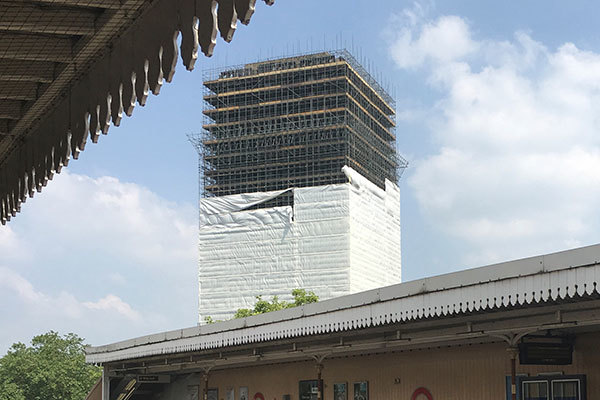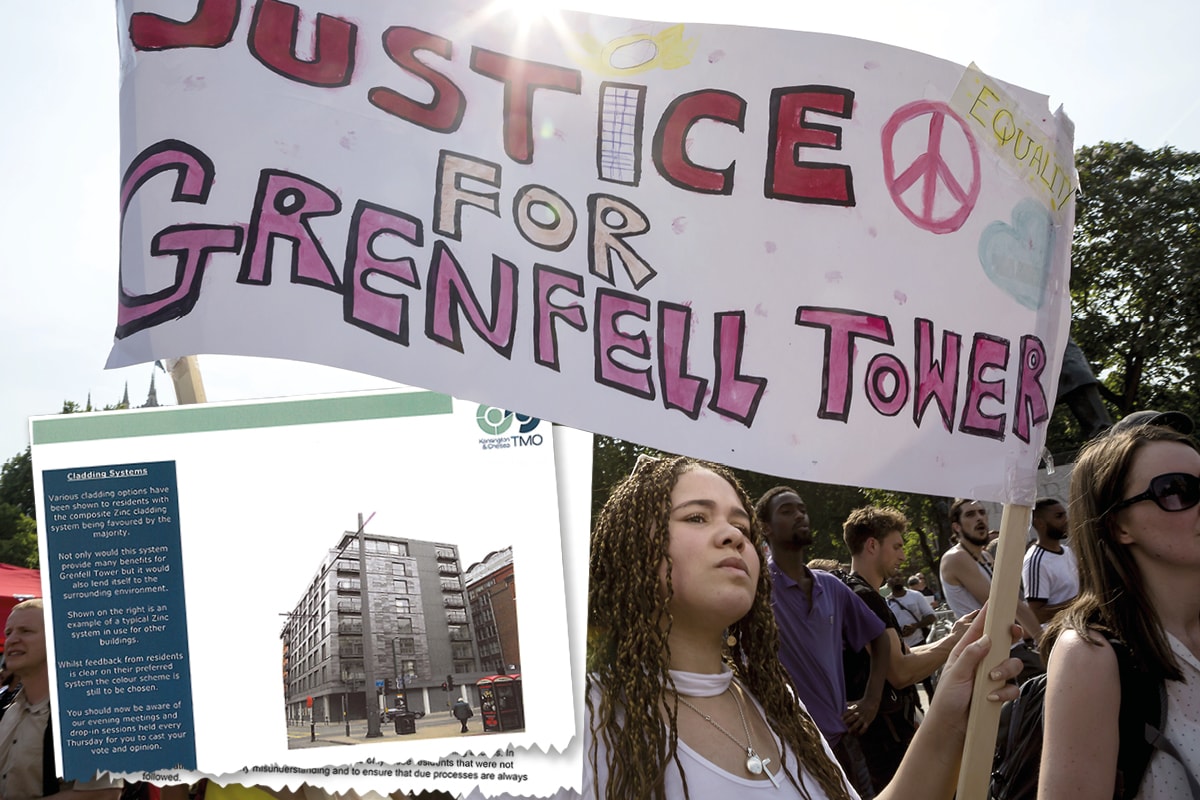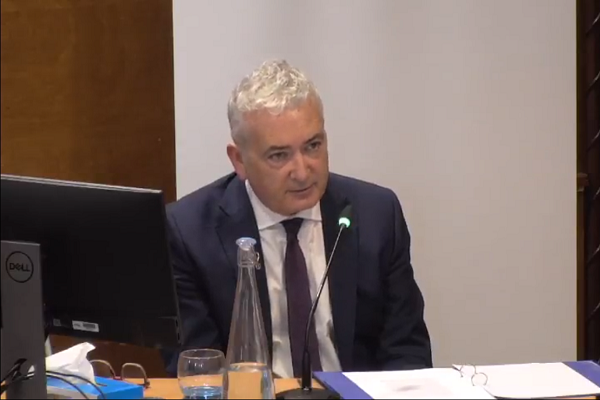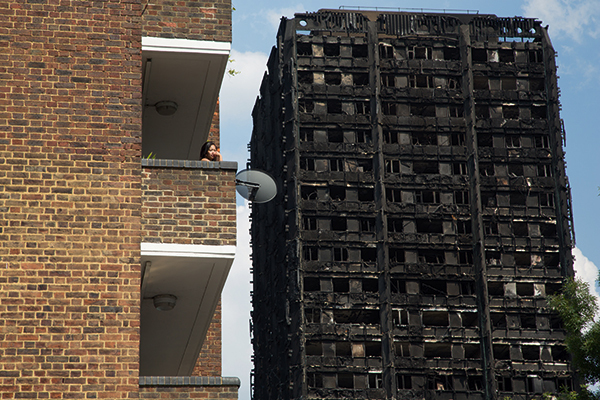KCTMO ‘not a passive bystander’ in Grenfell Tower refurbishment, inquiry hears
Kensington and Chelsea Tenant Management Organisation (KCTMO) was not a “passive bystander” in the Grenfell Tower refurbishment and took on key roles including a drive for cost-cutting, a consultant to the project has claimed.
Richard Spafford – representing Artelia, which was engaged as a quantity surveyor and construction, design and management consultant – said that the firm disagreed with KCTMO’s characterisation of itself as simply being “let down” by others.
He said that KCTMO in fact remained project manager throughout the refurbishment – which fitted the deadly cladding – and made crucial decisions relating directly to fire safety.
These included telling contractor Rydon not to add further fire protection to the building and participating in the decision to use ‘cassette’ cladding panels. The inquiry has previously heard that the cassette shape of the cladding reduced its fire performance.
It comes amid an application from some of the corporates involved in the inquiry, including KCTMO, for an assurance that the evidence they give will not be used in evidence in a future criminal trial.
This application is due to be considered in more detail on Monday.
KCTMO acted as an arm’s-length management organisation responsible for the management of 9,000 council homes in Kensington and Chelsea.
“Running throughout the TMO’s written submission is its portrayal of itself as no more than a reactive, passive, inexperienced bystander, powerless as those around it let it down,” Mr Spafford told the inquiry this morning.
“The TMO suggests that its decision-making was limited, that it never signed off on designs, that it handed over anything of substance to the design team. The TMO may have been let down, that’s a matter for the inquiry, but its portrayal of itself is not accurate.
“Throughout the process Artelia was there. What about the TMO’s project manager role? What about its design sign-off, what about its decisions on kitchens, windows and the crown?
“What about its decision with [the Royal Borough of Kensington and Chelsea] to use champagne-coloured [aluminium composite material] cladding with cassette fixings? What about its driving through of value engineering [cost-cutting]?
“What about its decision that Rydon should not introduce or alter any further fire protection works following an indication that areas of existing fire compartmentation needed addressing?”
He referred to emails from KCTMO staff members that referred to “a very tight timeframe and an even tighter budget” for the project and said a “value engineering hitlist” was drawn up in late 2013.
He claimed that the focus of the project was “realigned by the TMO at the behest of [the Royal Borough of Kensington and Chelsea]” to make “value for money” the “primary driver” in 2013.
He also referred to an email in which Claire Williams, project manager at KCTMO, asked about the fire resistance of the panels in November 2014 – specifically referring to a previous tower block fire at Lakanal House.
He said that she had been referred to Rydon, as this was not an area of expertise for the Artelia team.
Mr Spafford was followed by Alice Jarrett, counsel for KCTMO, who defended the organisation’s role in the process. She said that the focus on reducing costs was not unusual.
“Looking for where reasonable costs can be reduced in a large public sector project is normal practice,” she said. “Competitive tendering and value engineering are intrinsic parts of most UK construction projects.”
She revealed that the contract, which went through a public procurement process in 2014, was procured 55% on quality, 34% on price, 5% on performance and 6% for the cost of alternative works.
Rydon won the bid after valuing it at £9.2m, with bids of £9.9m and £10.4m submitted by rival contractors Durkan and Mullaley respectively.
Ms Jarrett also emphasised that KCTMO did not have the experience to make fire engineering decisions and was entitled to rely on the design team of Rydon and architects Studio E to use compliant materials.
“The TMO had a reasonable expectation that all the options [for the cladding material] set down in specifications would be suitable and compliant options for the external façade,” she said.
KCTMO was stripped of its management function in summer 2017 and now exists solely for the purposes of investigating the fire.
The inquiry continues.













